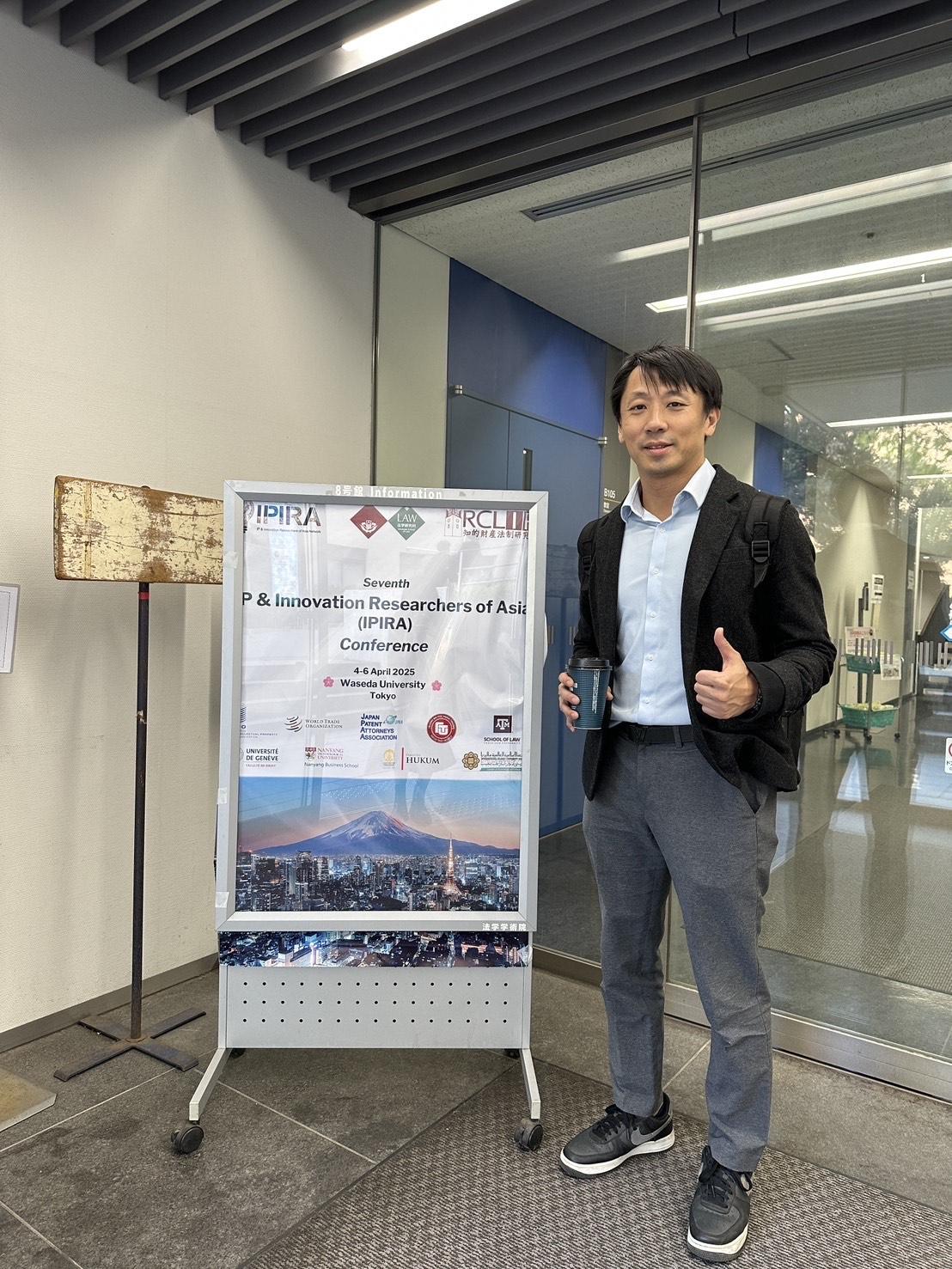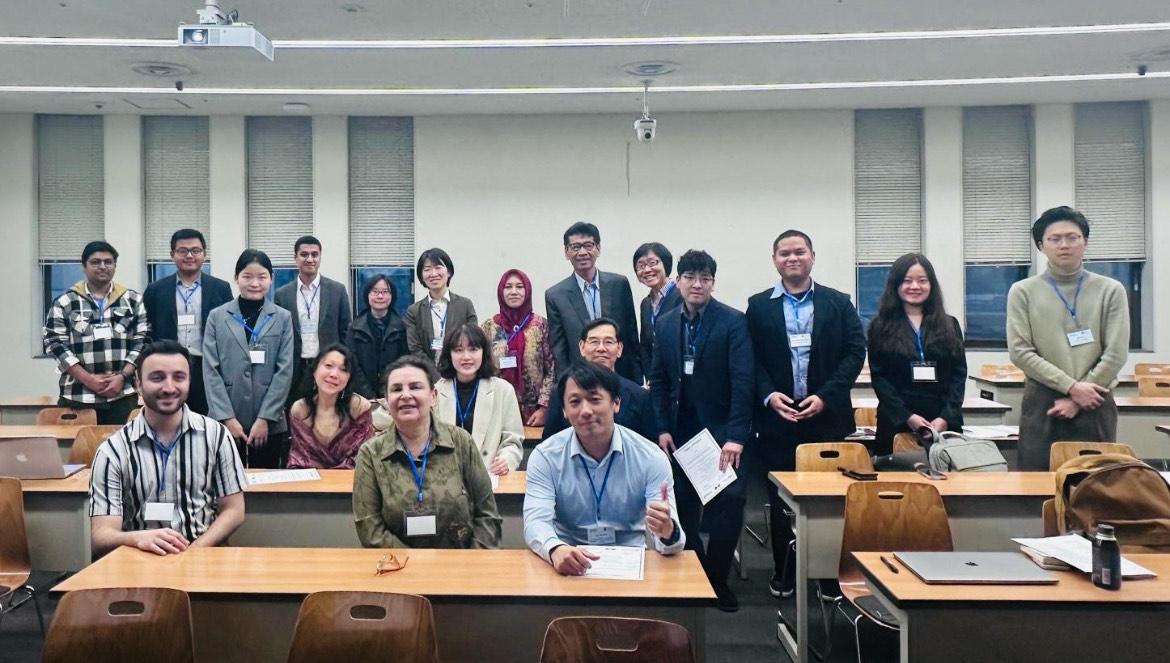We are pleased to announce that our Vice President, Dr. Rico Cho, was invited to attend the 7th IP & Innovation Researchers of Asia (IPIRA) Conference, held at Waseda University in Tokyo. At the session titled “How Does Intellectual Property Apply to Different Industries?”, he presented a paper of the same title, focusing on how intellectual property (IP) frameworks are being applied and redefined across various industries.
This session brought together scholars and industry professionals from multiple countries to explore how IP systems adapt to the development trends in fields such as technology, food, biotechnology, and information and communications. The dialogue highlighted the evolving roles and functions of IP in these dynamic sectors.
Conclusion and Recommendations
The AR-HUD and smart cabin technologies hold significant market potential in the coming years. However, they also face a series of technical, strategic, and competitive challenges. To maintain a competitive edge in the global AR-HUD market and ride the wave of smart cabin innovation, Taiwanese companies must strengthen their patent strategies, foster technological innovation, and actively seek collaborations with domestic and international firms and research institutions. These efforts will be critical to unlocking commercialization opportunities and establishing a strong global presence.
(1) Patent Strategy Recommendations
Before investing in AR-HUD R&D, Taiwanese companies should conduct a comprehensive analysis of relevant patents in major markets. Our study found that Japan and China currently dominate AR-HUD-related patent filings. Therefore, companies aiming to enter these markets should be especially mindful of potential patent risks. While other countries—such as the U.S., Europe, and South Korea—have fewer AR-HUD patents, it remains essential to identify any key patents held in those jurisdictions. Securing such patents may help mitigate future infringement risks.
Currently, AR-HUD patents are concentrated in three technical areas: light oscillation, visual dimension expansion, and focal point enhancement. Companies entering the AR-HUD space—whether through in-house R&D, partnerships, or client development—should pay close attention to these core technologies. A well-informed patent strategy should involve proactively filing patents in these areas or investigating the ownership of relevant existing patents.
(2) Patent Development Trends
The AR-HUD technology landscape is still emerging, especially within the automotive sector, which leaves ample room for strategic patent positioning. Leading companies such as DENSO, Nippon Seiki, and emerging players like China’s Futurus are likely continuing to expand their patent portfolios in this domain.
Thus, companies developing the next generation of HUD technology should analyze the patent portfolios of key players to track the evolution of the field. This will help identify opportunities for licensing, design-around strategies, or targeted R&D. Additionally, Taiwanese companies could collaborate with upstream and downstream partners in the supply chain to share development costs and accelerate innovation. Another viable strategy is to identify gaps in current patent coverage and seek protection in those areas, thereby gaining leverage for future industry entry or partnership negotiations.
(3) Technical Development Challenges
Several technical hurdles remain in HUD system development, particularly:
1. Solving Visual Display Challenges
Key visual issues such as ghosting and image alignment require innovative solutions. For example, wedge-shaped PVB laminated glass can effectively address ghosting in traditional W-HUD systems. For AR-HUD, eye-tracking technology is a core innovation that allows real-time adjustment of projection images, significantly enhancing both driver safety and comfort.
2. Enhancing System Integration and Data Visualization
AR-HUD is evolving to integrate real-time driving environment data and navigation information with 3D imaging. The goal is to project actionable insights—such as parking availability or traffic congestion levels—directly into the driver’s field of view, enriching the driving experience and reshaping traditional vehicle operation modes.
(4) Strategic Recommendations for Taiwanese AR-HUD Manufacturers
1. Align with Smart Cabin Development Trends of Major OEMs
Taiwanese companies should closely monitor the smart cabin strategies of leading automakers, especially electric vehicle brands and traditional automakers undergoing transformation. These OEMs may be interested in AR-HUD integration but lack the internal capacity to develop such technology, creating an opportunity for external suppliers to step in via partnerships, investments, or acquisitions.
Taiwanese suppliers could also collaborate with local ICT and display panel companies already involved in smart cabin markets. These partnerships can help expedite product integration and market access. Importantly, companies with robust patent portfolios will be better positioned to safeguard operational freedom and protect proprietary technologies.
2. Explore Customized AR-HUD Applications Beyond Automotive Use
Beyond automotive applications, alternative markets such as cranes or container logistics represent untapped opportunities for AR-HUD technologies. Although smaller in scale, these sectors face less competition and may offer strong entry potential for Taiwanese firms able to deliver high-performance, high-impact products with unique features. Successfully creating value in these niche markets could increase client adoption and serve as a stepping stone toward broader commercialization.


